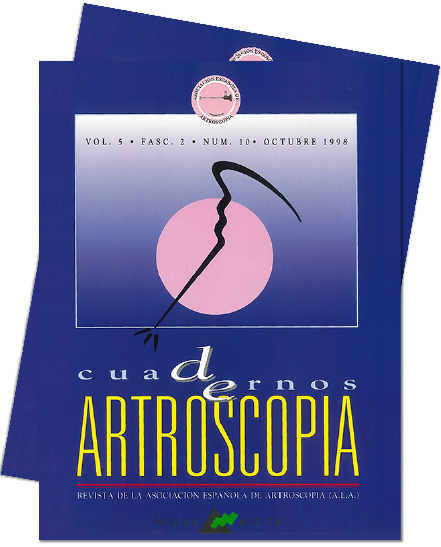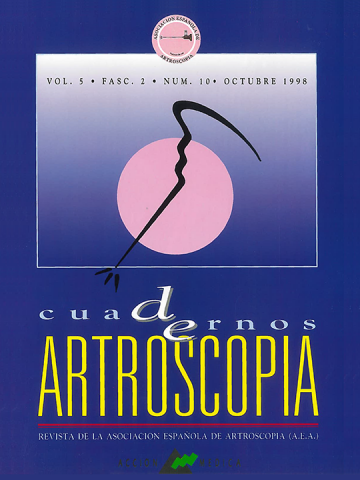Resumen:
La ausencia completa del labrum glenoideo en el cuadrante antero-superior del hombro, asociada a un ligamento glenohumeral medio cordonal (LGHM), constituye la variante anatómica denominada Complejo de Buford. Se presenta un caso de hombro doloroso, clínicamente diagnosticado de tendinopatía del manguito rotador grado 11 de Neer. El diagnóstico de Complejo de Buford se realizó mediante resonancia nuclear magnética (RMN), confirmándose el mismo mediante artroscopia del hombro. Se realizó descompresión subacromial anterior artroscópica según técnica de Ellman, sin actuar sobre las estructuras del complejo cápsulo-ligamentoso de la articulación escápulo-humeral. Se presenta la iconografía del caso (RMN y artroscopia). Realizamos una revisión de la bibliografía existente sobre esta variante anatómica del hombro, llamando la atención sobre un posible tratamiento innecesario de la misma.
Abstract:
Complete absence of the glenoid labrum in the anterosuperior quadrant of the shoulder, in association with a string-like median glenohumeral ligament constitutes the anatomic variant termed Buford's Complex. We report a case of painful shoulder, which had been clinically diagnosed as a Neer grade 11 rotator cuff tendinopathy. The diagnosis of Buford's Complex was established through MR sean and confirmed through arthroscopy of the shoulder joint. Anterior subacromial decompression was performed arthroscopically using the Ellman technique, without involving the structures of the capsulo-ligamentary complex of the glenohumeral joint. The iconography of the case (MR sean and arthroscopy) is presented. We have reviewed the existing literature on this anatomic variant of the shoulder, and underscore the risk of a possible unnecessary therapy of the same
Keywords:
Arthroscopy
Buford's Complex
Glenoid labrum
Median glenohumeral ligament
Shoulder




